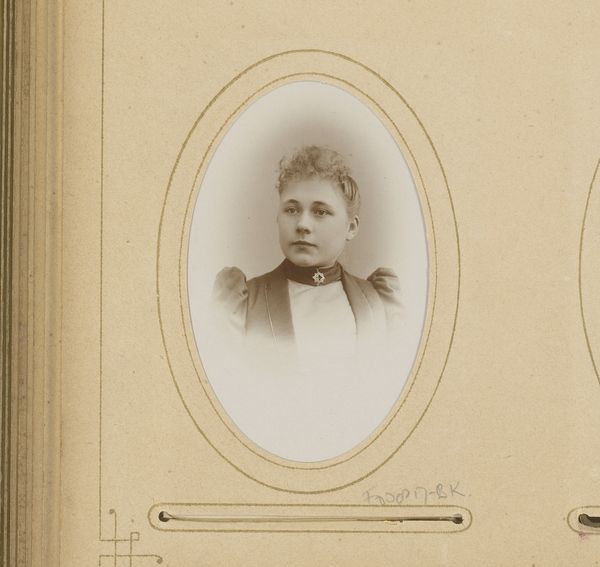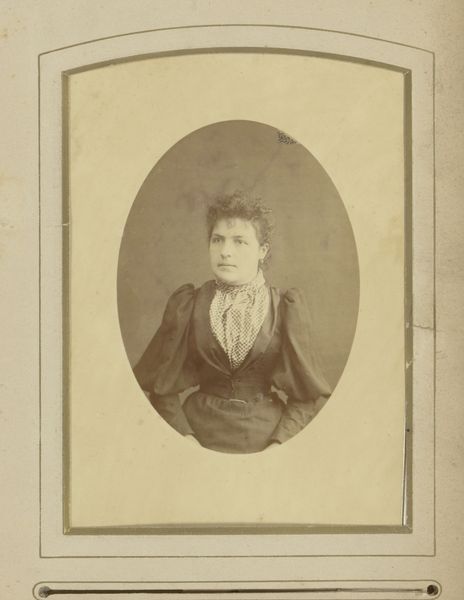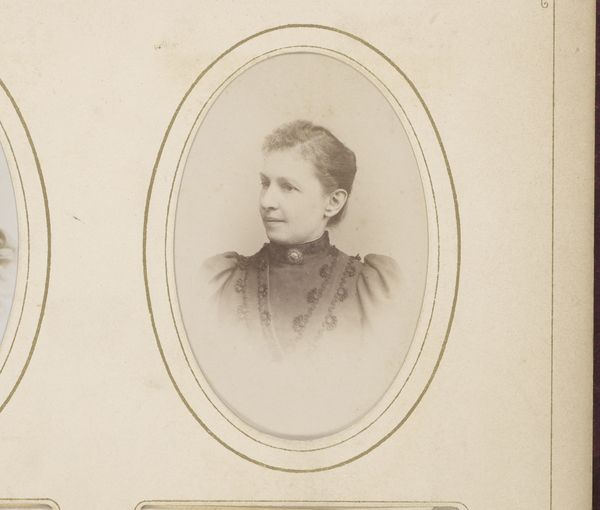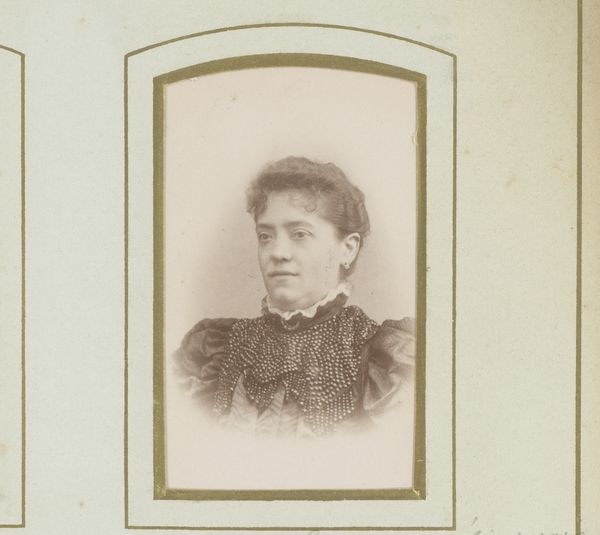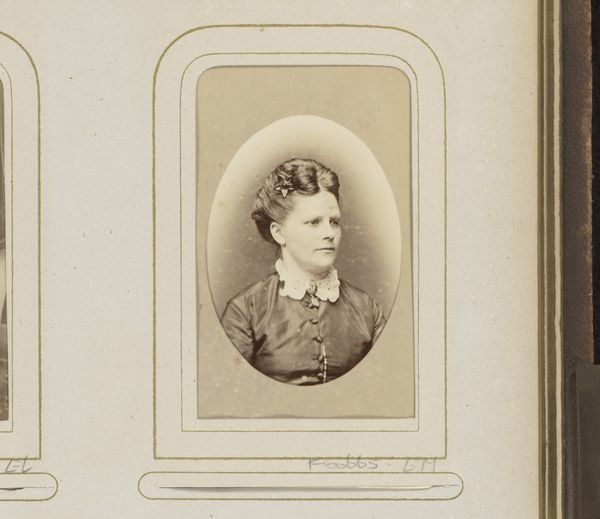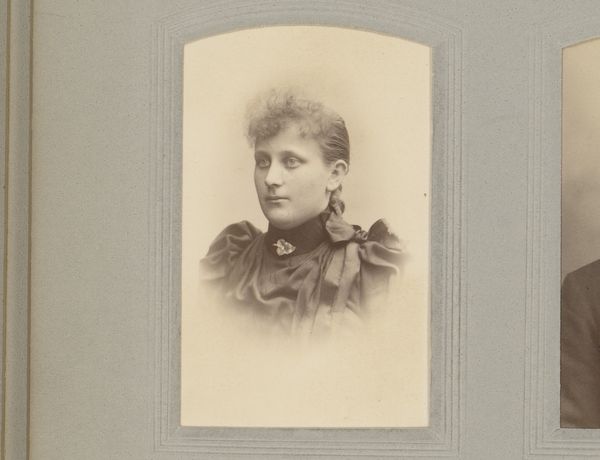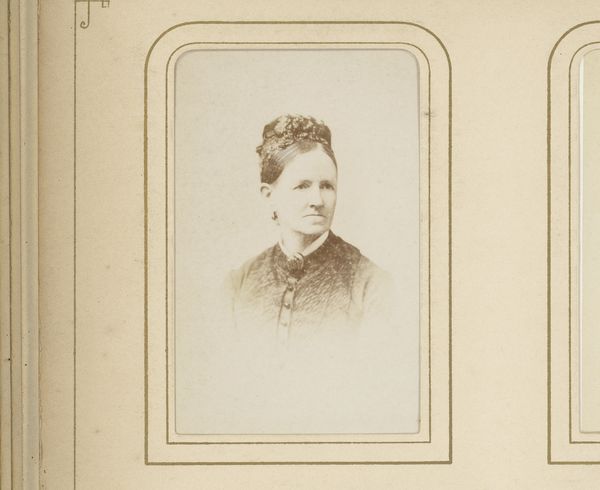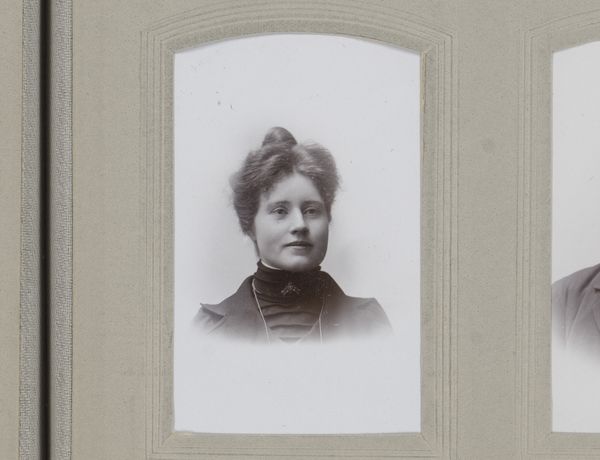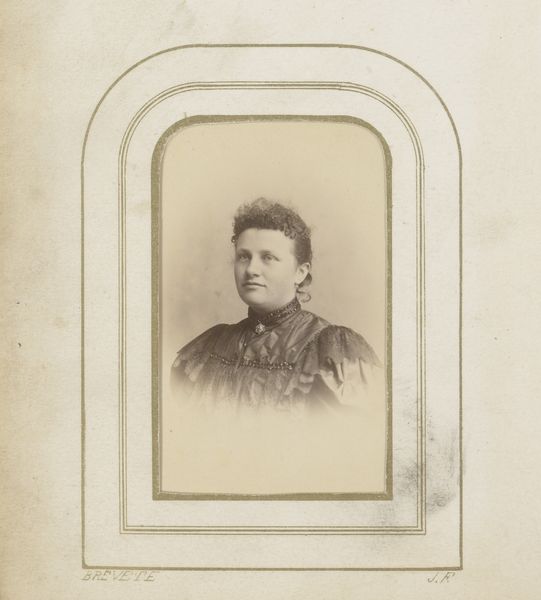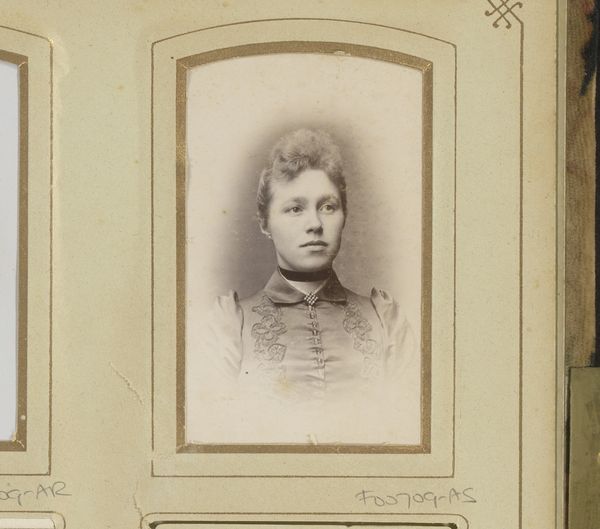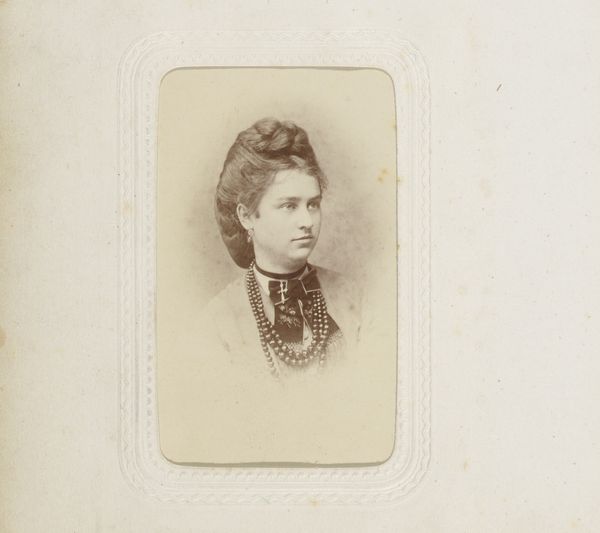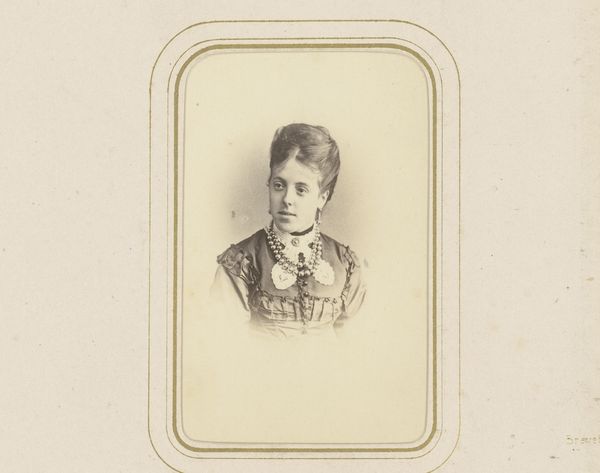
photography
#
portrait
#
pictorialism
#
photography
Dimensions: height 137 mm, height 97 mm
Copyright: Rijks Museum: Open Domain
Editor: Here we have “Portret van miss Garrity,” a photograph from between 1880 and 1910. The sepia tone and soft focus give it such a dreamy, almost ethereal quality. It feels very intentional. What do you see in this piece from a formalist perspective? Curator: From a formalist reading, the appeal resides less in its representational content than in its visual structure. The composition itself creates that "dreamy" quality. Notice the delicate interplay between light and shadow across her face. The photographer’s manipulation of tonal range invites a deeper look into the texture and depth created within a monochrome palette. Editor: The light is interesting, especially on her face and how it almost diffuses the background. How does the choice of sepia tones affect your interpretation? Curator: The sepia tone here isn’t merely aesthetic; it fundamentally impacts the photographic texture. It reduces contrast, fostering subtle gradients that lend a sense of softness. Do you see how the careful graduation of tones, more than a sharp focus, defines the form? Editor: Yes, it softens the edges. Are you suggesting that this is more than just a record of her appearance? Curator: Precisely! Through specific choices in lighting, focus, and tone, the photographer invites the viewer to analyze the constructed reality presented. The photographer is using the medium as an artistic language. Editor: This really highlights how even a portrait is a constructed image, and understanding the visual language informs that reading. Curator: Exactly. It challenges the conventional perception of photography as purely mimetic, guiding us to appreciate the artistry inherent in its construction. Editor: Thank you! It’s great to consider photography as a medium beyond simply recording.
Comments
No comments
Be the first to comment and join the conversation on the ultimate creative platform.

